Whether you’re a cruise enthusiast dreaming about your next floating hotel or a newbie pondering your first maritime voyage, there’s one decision that can make or break your trip: selecting the right room.
So grab a cruise planner for free and pack your virtual sea bags, and let’s dive in to the top cruise cabins to avoid!

Understanding the Cruise Ship Structure
Alright, before we venture deeper into the specifics of room selection highlighting the rooms to avoid, it’s essential we get our sea legs by understanding some basic ship lingo and structure.
Think of this as the foundation upon which you’ll build your stellar maritime vacation choices.

Ship Terminologies 101:
- Bow: This is the front part of the ship. If you imagine Jack and Rose from Titanic, they were standing at the bow when they declared themselves the “king and queen of the world.” Exciting, but also a spot that can feel a lot of motion!
- Stern: The back of the ship. While often offering fantastic views, rooms near the stern might also catch more engine noise and vibrations.
- Port: When you’re facing the bow, the left side of the ship is called the port side. Fun tip: “port” and “left” both have four letters, making it easier to remember! Also, make sure to check out our port vs. starboard guide.
- Starboard: Opposite the port, this is the right side of the ship when you’re facing forward. Often, views from one side of the ship might be favored over the other, depending on the journey’s route.
- Midship: This is the middle area of the ship, both from bow to stern and from port to starboard. If you’re worried about seasickness, this area often feels the least motion.
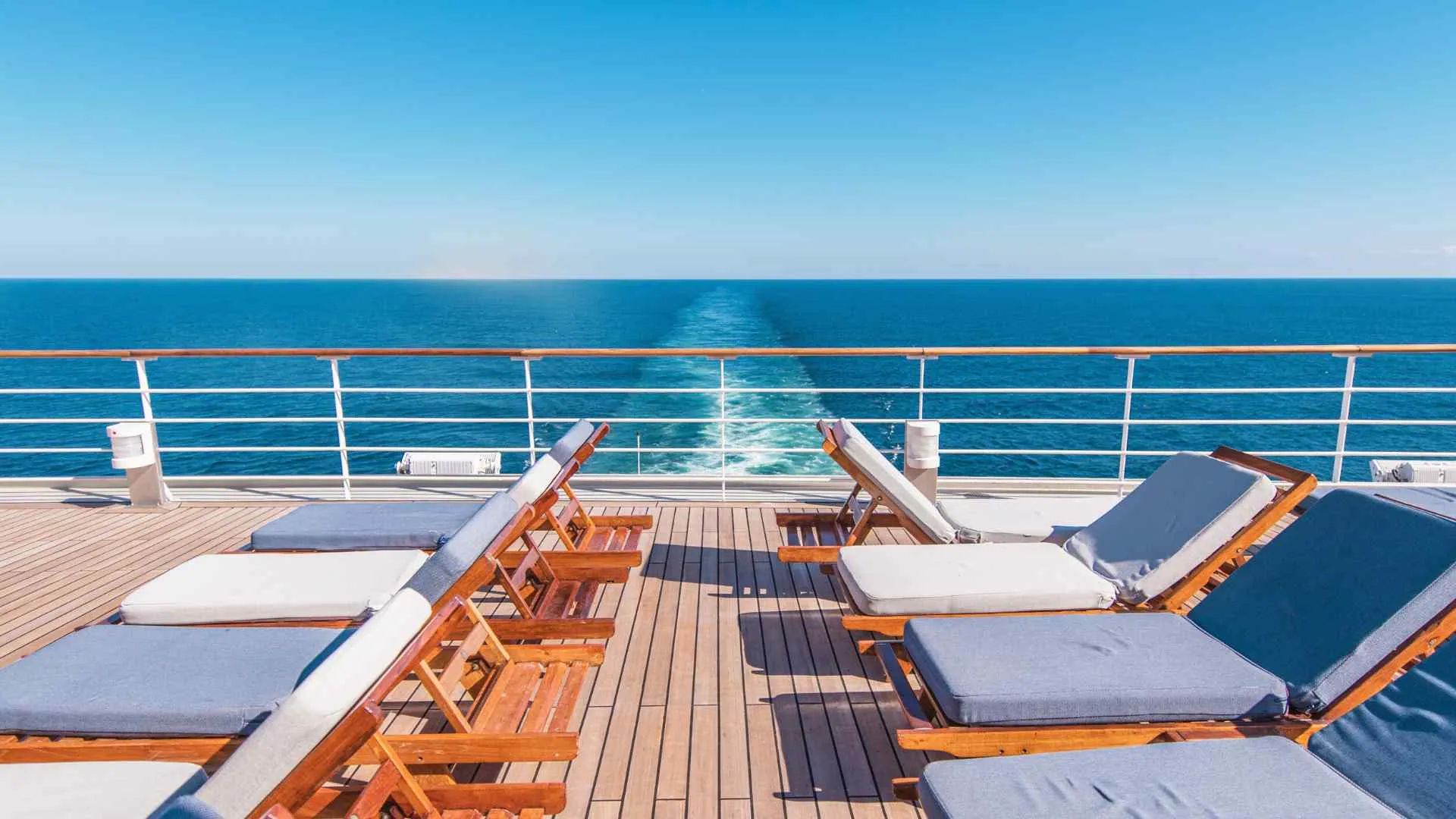
Deck Levels and Their General Purposes:
Sea vessels, especially cruises, come with multiple decks, each serving a different purpose:
- Upper Decks: These often house the ship’s recreational amenities – think pools, sun loungers, outdoor theaters, and sometimes even water parks or mini-golf courses.
- Mid-level Decks: Here, you’ll find a mix of accommodations and public spaces like restaurants, shops, and entertainment venues. These decks keep you close to the action!
- Lower Decks: While they primarily house rooms, they’re also the working heart of the ship, where you might find the engine rooms, storage, and crew quarters. While often quieter in terms of guest traffic, the mechanical hum and bustle can be more pronounced here.
By now, you should have a general map in your mind of how a cruise ship is structured. But remember, every ship has its own unique design and layout, so always refer to the ship’s deck plan when booking.
This foundational knowledge will serve you well as we embark on our journey to uncover which rooms might just be the pesky culprits of sleepless nights or less-than-perfect voyages.
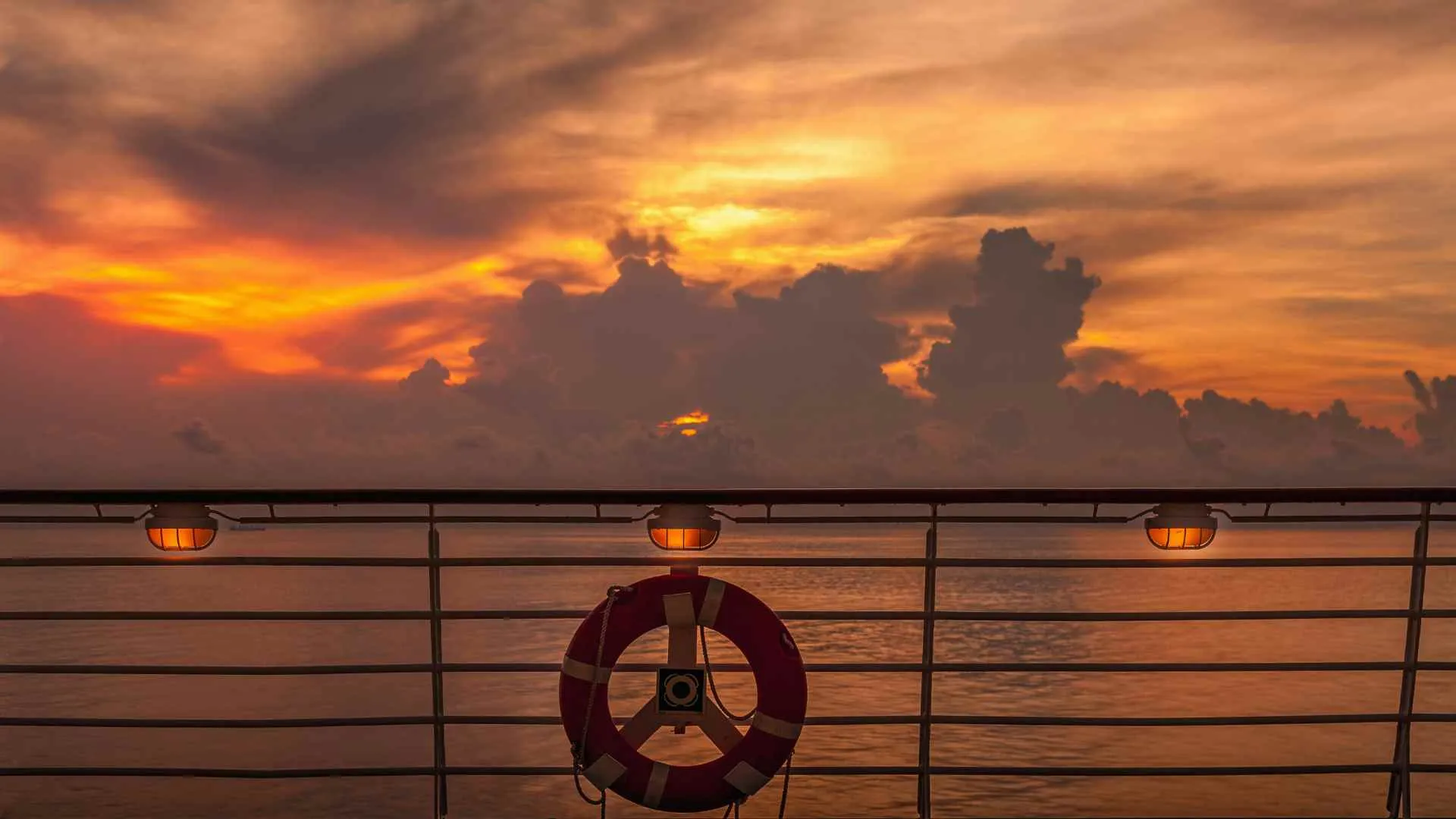
Top 23 Cruise Cabins to Avoid
To save you some reading time, I have listed my top 23 cruise cabins to avoid below. Now these are all pretty situational, so make sure to keep reading to understand the why.
- Cabins at the very front (bow) – enforced light restrictions and motion sickness from front/back alignment
- Rooms at the very back (stern) – motion sickness from front/back alignment
- Higher deck cabins – motion sickness higher you are up
- Cabins next to elevators/stairs – unnecessary noise from folks moving around
- Rooms adjacent to crew areas – unnecessary noise from crew service
- Staterooms above and below lounges and night clubs – unnecessary noise late night
- Cabins near entertainment spots – unnecessary noise from, entertainment
- Rooms near the pool deck – unnecessary noise from pool activities
- Cabins near kid zones – unnecessary noise from kids
- Adjoining staterooms – unnecessary noise from neighbors
- Rooms near anchor – unnecessary noise from ship
- Cabins on the lower decks – unnecessary noise from ship
- Rooms near debarkation areas – noise and congestion during port days
- Awkwardly positioned rooms – usually less space
- Interior cabins – less space, no natural light or view
- Obstructed view cabins – only partial view
- Cabins below the promenade deck – have natural light, but not great view
- Accessible rooms – should only book if your travel party needs one
- Forward-facing suites with panoramic windows – can provide too much light
- Cabins near stairwells – potential proximity perks
- Rooms underneath or adjacent to main facilities – potential proximity perks
- Cabins at the far ends of the ship – potential proximity perks
- Cabins close to service areas – potential proximity perks

Factors That Affect Room Desirability
Navigating the seas of room options can be a bit like navigating the ocean itself: filled with waves of choices, each with its own set of challenges and rewards. But fear not, brave traveler!
By understanding some key factors that impact room desirability, whether it be wanting to avoid noise or desiring a perfect sunset cruise, you’ll be well-equipped to make a choice that is informed by the rooms to avoid and ensures smooth sailing.
The Role of Motion
- Seasickness Susceptibility: The ship’s motion can be a blessing for some (who doesn’t love a gentle rock to sleep?) but a curse for others. Certain parts of the ship, like its very front (bow) and back (stern), are more susceptible to the rocking motion.
- Midship Magic: Staying midship, especially on lower decks, means you’re at the ship’s natural balance point. It tends to experience the least amount of motion, making it a favorite for those prone to seasickness.
Noise Considerations
- Operational Sounds: Rooms near the engines, anchor mechanisms, or service areas can experience more operational noises.
- Social Sounds: Consider the potential for noise from theaters, clubs, or even high-traffic hallways. It’s not just about what’s next door but also what’s above or below you.

Views and Natural Light
- Windowless Woes: Some rooms, often called “interior cabins,” lack windows. While usually more affordable, they can be disorienting for some, especially those who crave natural light.
- Obstructed Views: Not all rooms with windows guarantee perfect views. Some might have lifeboats or other equipment partially blocking the vista.
Proximity to Key Areas
- Accessibility vs. Noise: Being close to main areas can mean shorter walks to your favorite activities. But remember, it might also come with the price of added noise or foot traffic.
- Elevator Proximity: While being near an elevator can be super convenient, it can also be a hub of noise and activity. You’ll need to decide on your own Goldilocks distance.
By now, you’re probably getting a clearer picture of how various room factors can impact your voyage’s overall experience. But don’t let the waves of information overwhelm you!
Armed with these considerations, you’re already several nautical miles ahead in choosing the perfect maritime accommodation.

Rocky Cabins to Avoid
Ah, the gentle sway of a ship. For some, it’s the stuff of dreams, cradling them into a peaceful slumber. But for others, it’s a quick ticket to dizziness, nausea, and an urgent wish that they’d stayed on solid ground.
If you’re in that latter category or just prefer a steadier footing, let’s dive into the rooms to avoid that are most likely to turn your sea adventure into a seesaw ride.
Cabins at the Very Front (Bow)
- Rolling with the Waves: The bow cuts through the waves, causing an up-and-down motion. While thrilling for some, it can be nauseating for others.
- A Dynamic Experience: Depending on the sea’s conditions, the movement at the bow can range from barely noticeable to extremely pronounced.
Rooms at the Very Back (Stern)
- A Different Kind of Movement: Unlike the bow’s up-and-down motion, the stern experiences a side-to-side swaying due to the ship’s propellers and the water’s push and pull. It’s a unique sensation that might not sit well with everyone.
- Engine Vibrations: Beyond just the swaying, the stern can sometimes be home to vibrations from the ship’s engines, giving rooms here a constant hum and rumble.
Higher Deck Cabins
- Elevation Equates to Exaggeration: Just like a seesaw, the higher you go, the more pronounced the movement becomes. Cabins on the topmost decks will feel more motion compared to those nestled closer to the waterline.
- Benefits and Downsides: Higher deck cabins often come with spectacular views and quicker access to recreation areas, but they demand a trade-off in stability.

Tips to Combat Motion Sensitivity:
- Stay Midship: We’ve mentioned this before, but it’s worth repeating. Midship rooms, especially on lower decks, will give you the most stable experience.
- Over-the-Counter Remedies: Consider seasickness patches or pills. Always consult with a healthcare professional before taking any medication.
- Natural Remedies: Ginger candy, acupressure wristbands, and focusing on the horizon can also help in combating seasickness.
Remember, the ocean’s behavior is unpredictable. Even in rooms that are typically stable, you might experience some motion on particularly rough days. It’s all part of the sea adventure!
But by being strategic with your room choice, you can minimize the chances of your dream vacation turning into a rocky ride.

Noisiest Staterooms
The melodious sound of waves crashing, the distant hum of the ship’s engine, the faint melodies from an evening show – these are the sounds we dream of when we think of a sea voyage.
But sometimes, the reality can be a cacophony of unexpected noises that play an unwanted nightly concert right in your room. Let’s dive into which cabins might have you reaching for those earplugs.

Next to Elevators/Stair Access Points
Cruise cabins near the elevator or stair access points can be some of the most important rooms to avoid as their location will lead to a lot of noise during most parts of the night and therefore, should be avoided.
Whether it be a group of teenagers running up and down the staircase or a couple of drunk friends stumbling through the elevator, noise around these areas is nearly impossible to avoid.
However, there are many benefits to a room close to the elevators and stairs that need to be considered before ruling this option out.
If you plan on spending a lot of time outside your stateroom or making frequent trips to the cruise buffet, you may prioritize having a cabin close to these areas.
Some cruise ships make it fairly difficult to avoid this location so just focus on choosing a stateroom that does not share a wall with the elevator nearby.

Adjacent to Crew Access Areas
Cruise cabins next to crew access areas should also be avoided at all costs as cruise staff will be working throughout the night to prepare for the next day.
If you end up in one of these staterooms you will frequently hear clattering as the crew maneuvers carts and other items for guests through the narrow crew access doors. The doors that guard these areas are typically very heavy and will be loud as crew members neglect to close them gently.
Also, it may become difficult to walk through the hallway near your stateroom as you awkwardly try and squeeze by the crew and their carts. While these cabins may be difficult to identify, a quick ship layout plan or call to your travel agent should help.
However, if you are looking to save money on your cruise, these cabins to avoid can actually be offered at a fraction of the cost of other cabins.

Staterooms Above or Below Lounges/ Night Clubs
Unless you are planning to stay out until around 2 am, I suggest avoiding the staterooms surrounding, above, or below the lounge and nightclub areas as they can be some of the noisiest staterooms at sea.
On most cruise lines, lounges are utilized for the night and late-night dance scene. The lounges will be filled with not only energetic but also very drunk passengers.
The noise from the dance floor can easily travel through the ceiling of the cabins below so before you book your cabin, make sure to check the layout of your ship.
Unfortunately, the walls separating areas on a cruise ship are not made to be soundproof, so if you do end up in one of these staterooms, you can reasonably expect to hear noises throughout the night.

Rooms Near the Pool Deck or Kid Zones
While you may think that these staterooms directly below the pool deck would be okay as the noise would only exist during the day, you are probably underestimating the amount of traffic this deck gets at night.
The young (and young at heart) cruisers will be out to the hours of 2 – 4 AM partying at the night club, and what do they do once the club closes? Well, they stumble back to their rooms or the 24-hour restaurant onboard. This can lead to a lot of stomping and loud conversations traveling through the pool deck’s flooring.
Further, each morning (and very early, may I add) cruise staff will begin to reorganize the pool chairs and tables. If you do not plan on being up and out of your stateroom by 5 AM, you probably do not want to be hearing chair legs scraping through your ceiling before you wake.

Adjoining Staterooms
If you do not plan on having your travel party on both sides of adjoining staterooms, I recommend avoiding them as they can be some of the loudest staterooms at sea.
In addition to these cabins offering less security, you will more than likely be hearing the conversations of your neighbors. With a full-size door being the only thing separating you from the other cabin, you will not only be able to hear nearly everything your neighbors are doing, but they will also be able to hear you.
Therefore, I highly suggest reviewing these rooms to avoid carefully and leaving them for families who would absolutely need adjoining cabins for cruising with little kids.

Rooms to Avoid Near the Anchor
Another one of the loudest staterooms at sea to avoid is those located near the anchor. If you get up early (before 5 AM), you will not be affected by these staterooms, however, everyone else should be wary as these are some of the noisiest staterooms onboard any ship.
On my most recent cruise, I was in a cabin that was on the lowest level, right next to the ship’s anchor. Every morning I was awoken by the not-so-beautiful noises the anchor made as it lowered.
Now if you want a ready-to-go alarm clock, these cabins may be perfect for you, however, I was not in the least bit impressed.

Staterooms on the Lower Decks
The noisiest staterooms at sea located on the lower decks should be avoided when possible. While the amount of noise you will hear will tend to be dependent on the itinerary of your cruise, it is important to note the potential for noise in these rooms.
I recently returned from a cruise that sailed through the roughest seas in the world (the Drake Passage) staying in a lower deck stateroom. I would frequently wake up in the middle of the night as massive waves struck the sides of our boat.
On the other hand, the decks offer the most stability to those suffering from motion sickness, so if you are one of those individuals, you should weigh the pros and cons of this location. Also, these staterooms will more than likely be the most affordable option on your cruise, so if you are more inclined to follow a strict budget, you do not necessarily need to rule these rooms out!
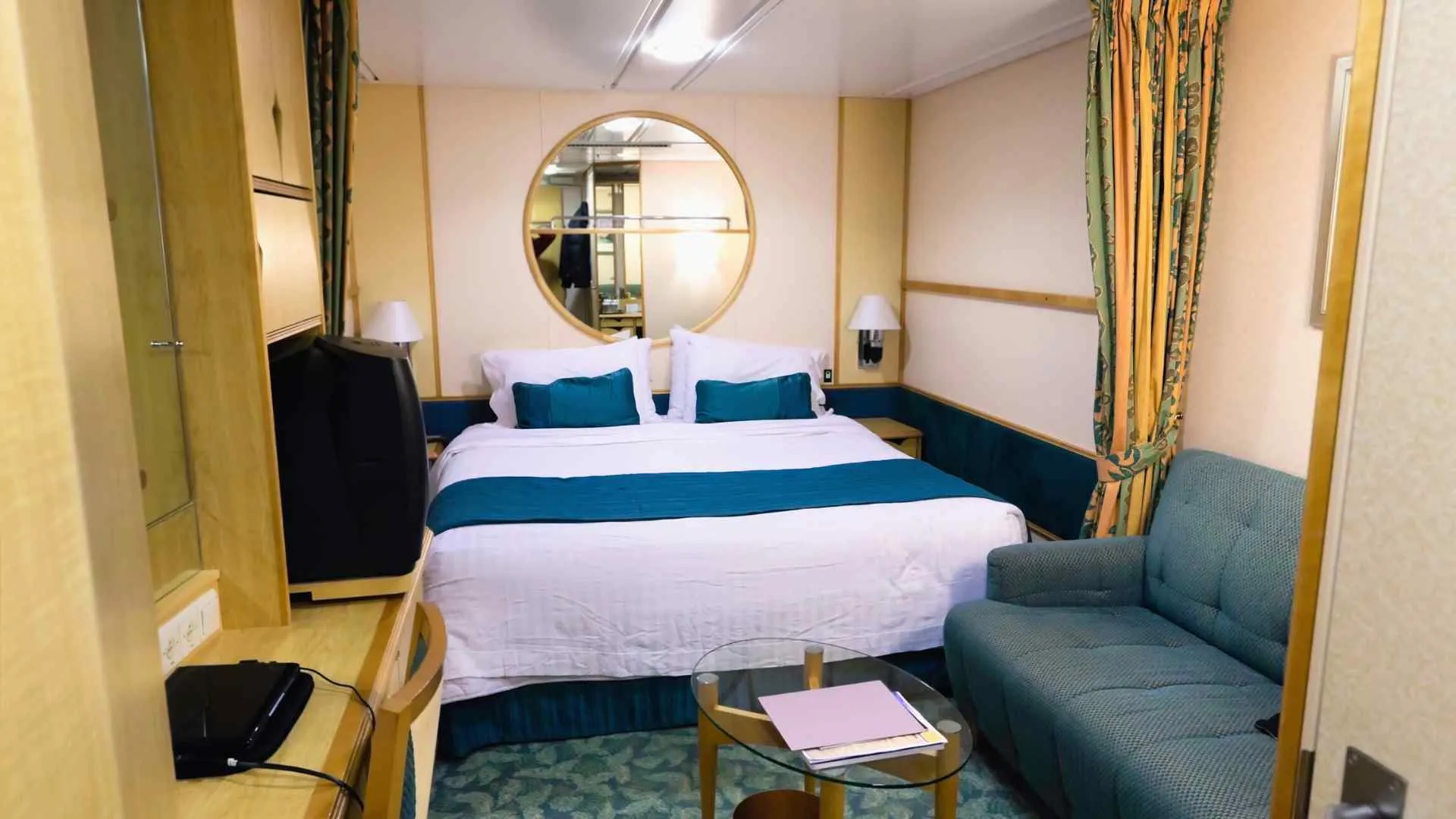
Rooms Without a View
Imagine this: You wake up, stretch lazily, pull aside your curtains, and… you’re greeted by the sight of a lifeboat. Not quite the sweeping ocean vistas you were dreaming of, right? Selecting the perfect room isn’t just about avoiding noise and motion – it’s also about securing that postcard-perfect view. Let’s uncover the potential view and lighting pitfalls that lurk in some cruise cabins to avoid.
Interior Cabins: The Windowless Wonders
- A Double-edged Sword: While they’re often the most wallet-friendly option, interior cabins come without windows, which can be disorienting for some travelers.
- Lighting Tricks: Modern ships sometimes equip these rooms with virtual balconies or LED screens that mimic a real view, adding a touch of ambiance.
Obstructed View Cabins
- A Peek of the Ocean: These cabins might have windows or even balconies, but something, often a lifeboat or structural equipment, hinders the view. It’s like having a tree right in front of your home’s window.
- Varied Degrees: Not all obstructions are created equal. Some might block just a portion of your view, while others could dominate the entire window.

Cabins Below the Promenade Deck
- Close to the Action, Maybe Too Close: These cabins can offer a view of the ship’s promenade, meaning you’ll see shops, cafes, and fellow passengers strolling by. It’s lively but can lack privacy.
- Natural Light, But… While these rooms do get natural light, the views are often of the ship’s interiors or activities rather than the open sea.
Forward-facing Suites with Panoramic Windows
- Windswept Views: These suites offer stunning forward views, but they can be subjected to a lot of direct sunlight and heat, especially when the ship is sailing towards the sun.
- Glare Galore: With large panoramic windows, these rooms can get excessively bright, which might affect your comfort and TV watching experience.

Balancing Proximity with Comfort
We’ve all been there. That dreaded moment when you realize your room is a marathon’s distance from the ship’s main attractions. Or the reverse, when you’re a bit too close to the action, with the pulsing beats of the nightclub ensuring sleep remains a distant dream. Let’s navigate the corridors of proximity and strike the perfect balance between accessibility and tranquility.
Cabins Near Elevators and Stairwells
- The Convenience Factor: These cabins ensure you’re just steps away from zipping up to the top deck or heading down to the dining rooms. No long hall treks for you!
- The Noise Nuisance: With convenience comes a caveat. Elevators and stairwells can be busy spots, leading to a constant hum of chatter, footsteps, and those ever-familiar elevator dings.
Rooms Right Underneath or Adjacent to Main Facilities
- Instant Access: Fancy a midnight snack or an early morning dip in the pool? You’re in the right place. No need to wander the ship in your pajamas or swimwear.
- The Soundtrack of Social Life: These cabins can sometimes be at the mercy of overhead sounds: the drag of lounge chairs, the vibrations of dance floors, or even the muffled echoes of a late-night karaoke session.

Cabins at the Far Ends of the Ship
- The Quiet Quarters: Nestled far from the main attractions, these cabins often promise a serene retreat. It’s like living in a quiet suburban corner.
- The Trek: Of course, the trade-off is the distance. Grabbing a quick meal or heading to the theater might feel like a mini-expedition.
Cabins Close to Service Areas
- Behind the Scenes: These cabins are adjacent to the crew’s quarters or service doors. While they’re not necessarily noisy, they can be subject to occasional sounds of operations.
- Unexpected Perks: On the upside, being close to these areas can sometimes mean quicker room service or prompt attention to any in-room requests.

Tips to Pick Your Perfect Proximity
- Map It Out: Familiarize yourself with the ship’s layout before booking. Know where the key facilities are in relation to potential cabins.
- Consider Your Activities: If you’re a spa enthusiast, being close to the spa might be a boon. If you love late-night shows, proximity to the theater makes sense.
- Know Thyself: Are you the kind of traveler who values peace over everything, or is being in the heart of the action your jam? Your preferences should guide your choice.
A sea voyage is about striking the right chords of adventure and relaxation. By considering the proximity of your cabin to the ship’s key areas, you can ensure your journey hits all the right notes, without any unwanted detours.

Best Rooms for a Premium Experience
While we’ve been on a deep dive into rooms to avoid, let’s not forget the hidden gems and gold-standard cabins that elevate the cruise experience to unparalleled heights. Whether you’re after opulence, unique views, or unmatched convenience, here’s your guide to the best rooms to drop anchor in.
Suites & Luxury Cabins
- The Pinnacle of Elegance: Suites offer spacious living quarters, often with separate living areas, expansive balconies, and upscale amenities.
- Bonuses: Many cruise lines offer suite passengers perks like priority boarding, exclusive dining options, or personalized concierge services.
Balcony Rooms with Unique Views
- Aft Balconies: Found at the rear of the ship, these cabins offer unobstructed, sweeping views of the ship’s wake, creating a tranquil sea canvas.
- Hull Art Balconies: Positioned where the ship’s exterior art is displayed, these can offer a quirky and Instagram-worthy backdrop.

Central & Midship Cabins
- The Stability Factor: Situated at the ship’s center, these cabins are often the most stable, making them ideal for those wary of seasickness.
- Convenience Kings: Their central location means you’re equidistant from most attractions, amenities, and dining options.
Spa Cabins
- The Zen Zone: Often located near the ship’s spa, these rooms offer a tranquil atmosphere, often with soothing decor and added wellness amenities.
- Perks Aplenty: Passengers might receive complimentary spa access, discounted treatments, or specialty wellness products.
Solo Traveler Cabins
- Tailored for One: Catering to the solo traveler, these cabins are designed for single occupancy, ensuring you don’t pay the often hefty single supplement.
- Community Feel: Many ships place solo cabins close together and incorporate shared social areas to foster connections among solo travelers.

Connecting or Family Cabins
- Traveling Tribe Friendly: These cabins offer interconnecting doors, making them perfect for families or groups. It combines the benefit of shared space while retaining privacy.
- Bonus Spaces: Some family cabins come with additional bunk beds, pull-out sofas, or even multiple bathrooms to accommodate everyone comfortably.
Panorama or Observation Suites
- A Window to the World: Offering floor-to-ceiling windows, these rooms provide unparalleled panoramic sea views, ensuring you’re immersed in the maritime magic 24/7.
- Exclusivity: Often, these suites come with exclusive access to observation lounges, private elevators, or other ship areas.
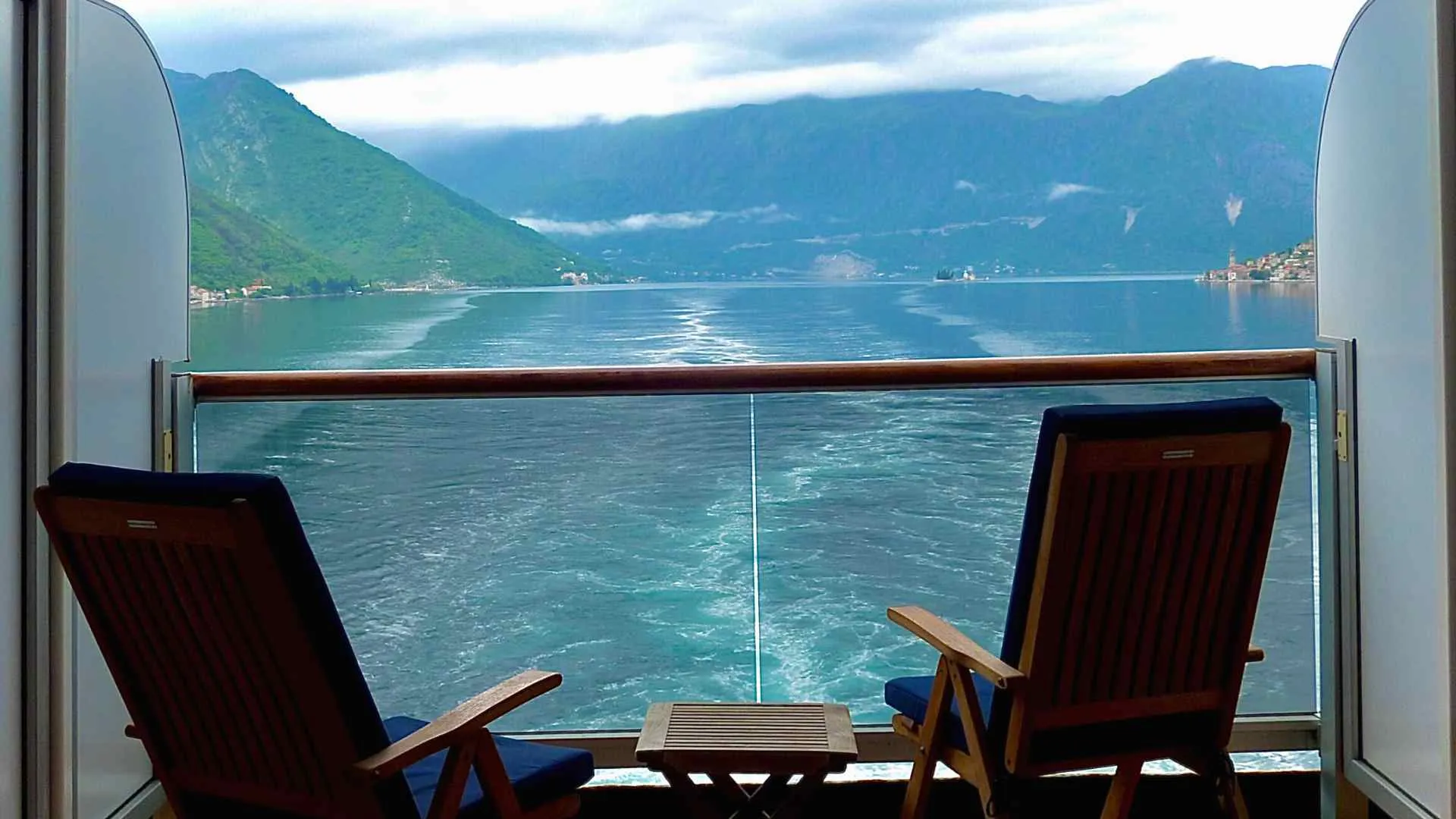
Expert Tips for Picking Your Perfect Room
Choosing a cabin is an art and a science, and who better to guide us than the seasoned travelers and cruise experts who’ve navigated these waters many times over? Let’s uncover some insider secrets to ensure that your cabin isn’t just a place to sleep, but a sanctuary that elevates your entire sea experience.
Prioritize Your Needs
- Know Your Non-negotiables: Before diving into cabin choices, list out what’s absolutely essential for you while accounting for the cruise rooms to avoid. Ocean view? Silence? Proximity to a particular amenity? This helps narrow down options.
- Trade-offs and Compromises: No cabin will tick every single box. Knowing what you’re willing to compromise on can simplify the decision process.
Engage with Online Communities
- Forums and Discussion Boards: Websites like Cruise Critic or dedicated cruise line forums are treasure troves of firsthand experiences. Fellow travelers often share detailed reviews of specific rooms to avoid.
- Photos and Videos: Many travelers upload room tours or photos, giving you a virtual feel of the cabin before booking.

Consider Upgrades, But Be Wise
- Last-minute Deals: As the departure date nears, cruise lines might offer upgrades at a fraction of the initial cost. While tempting, always cross-check the specific cabin details before jumping on such deals.
- Beware of “Guarantee” Cabins: These are often cheaper, but you don’t get to pick your exact room. You’re only guaranteed a room in the chosen category or above. It’s a gamble – you might get a fantastic room, or you might end up with one of the less desirable ones.
Seasoned Travel Agent Insights
- An Insider’s Perspective: A travel agent specializing in cruises will have insights that aren’t easily available online. They often know the quirks of specific ships and can guide you based on your preferences.
- Access to Deals: Beyond just knowledge, they might also have access to special rates, perks, or packages that you wouldn’t find when booking directly.
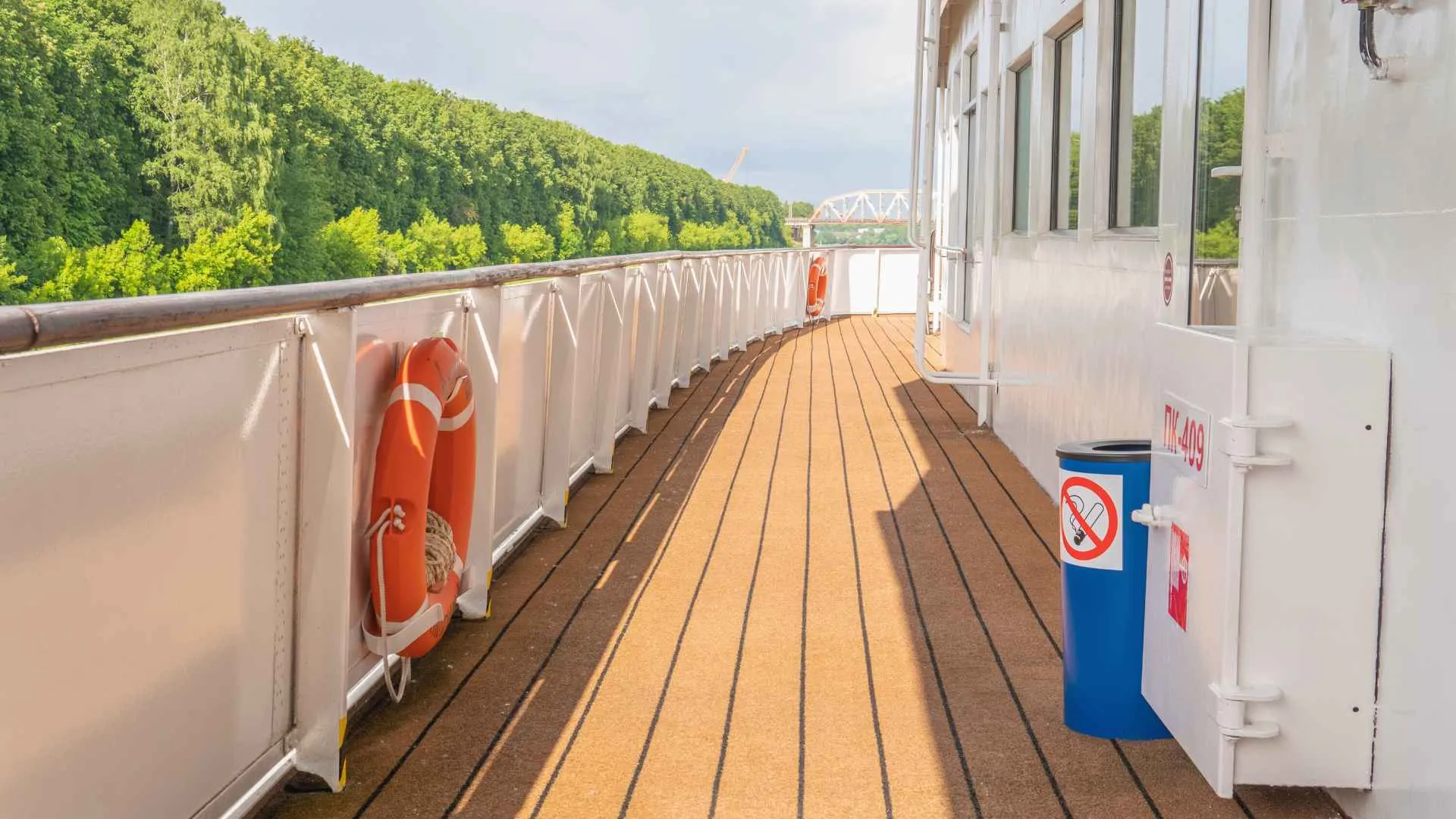
Consider the Ship’s Age and Renovation Status
- Older vs. Newer Ships: Older ships might have smaller cabins compared to newer counterparts, but they might also ooze a charm and character that newer ships don’t have.
- Post-renovation Perks: Ships periodically undergo refurbishments. A cabin on a recently renovated ship can offer modern amenities, fresh decor, and sometimes even additional space.
Always Have a Backup Option
- Two is Better Than One: It’s always good to have a second or even third choice in mind. During peak seasons, cabins get booked quickly, and your first choice might not always be available.
Picking the perfect cabin is like choosing a home. With these expert tips in your arsenal, you can confidently select a space that promises comfort, joy, and endless sea memories with the rooms to avoid in mind.
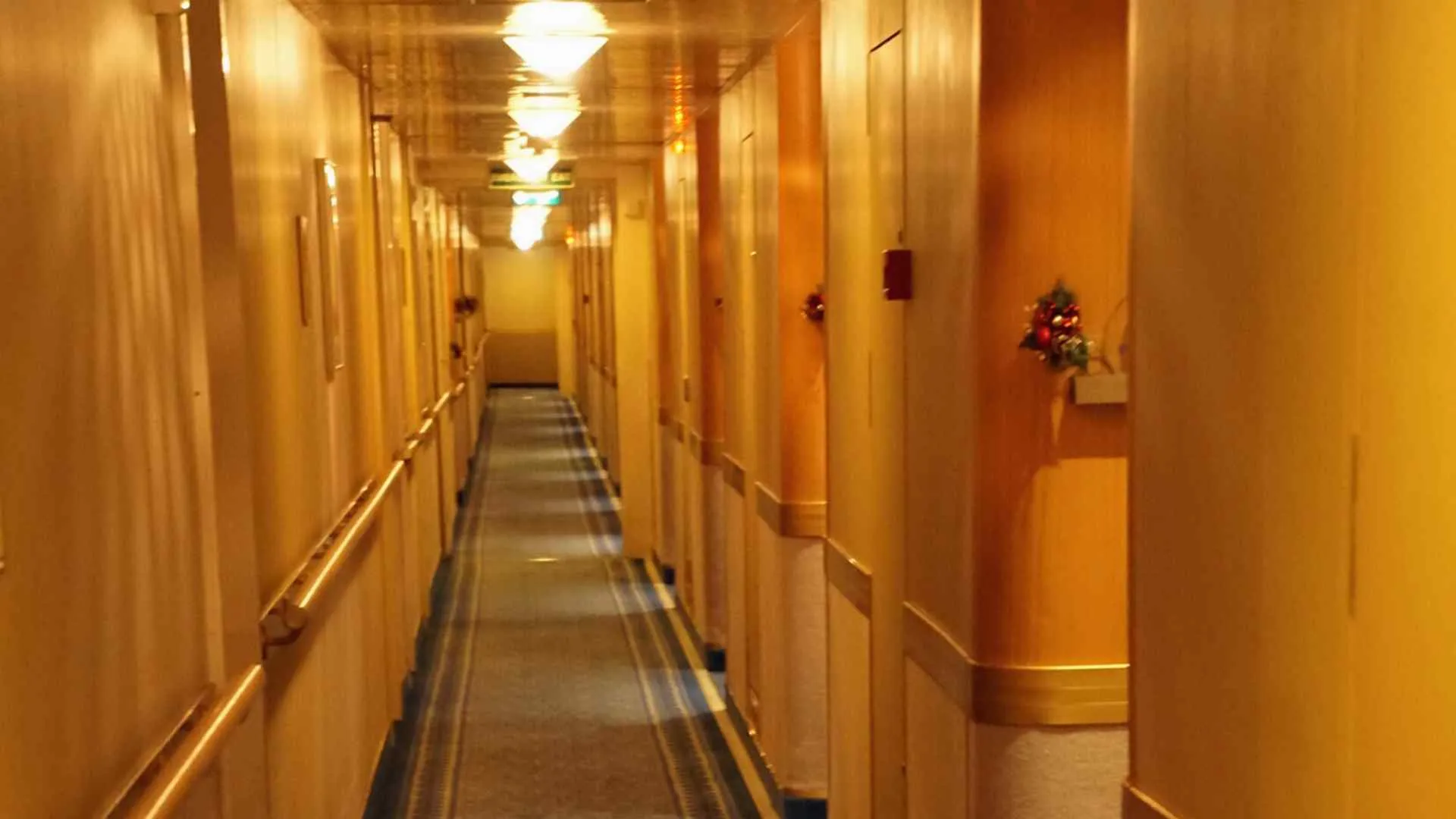
Making the Best of Less-than-ideal Rooms
Let’s face it: sometimes, despite all our research and best intentions, we might find ourselves in a room that’s… well, let’s just call it ‘characterful’. But a less-than-perfect room doesn’t mean a less-than-perfect voyage! Here’s how you can make the most of any cabin situation and keep the maritime magic alive.
Soundproofing Your Space
- Door Draft Stoppers: A simple yet effective solution, these can keep out noises from the corridor, especially if you’re near high-traffic areas.
- White Noise Machines or Apps: These can drown out inconsistent background noises, creating a soothing ambiance. Ocean waves, anyone?

Improving Your View (or Lack Thereof)
- Virtual Windows: If you’re in an interior cabin, consider bringing a tablet or laptop loaded with scenic ocean or nature videos. It can act as a faux window, bringing a sense of the outside in.
- Decorate: Bring along some static cling window decorations or wall hangings. A cheerful decor can divert attention from a lackluster view.
Dealing with Motion Sensitivity
- Portable Fans: These can improve air circulation in the room, reducing the stuffiness that might exacerbate motion sickness.
- Wristbands & Remedies: Sea-bands, which use acupressure, or over-the-counter motion sickness remedies can be handy. Always consult with a healthcare professional before taking any medication.

Maximizing Space in Smaller Cabins
- Over-the-Door Organizers: These wonders can hold toiletries, shoes, or even small items, making the most of vertical space.
- Collapsible Storage: Think of items like foldable shelves or storage cubes. These can help you organize and separate your belongings efficiently.
Managing Light and Temperature
- Portable Blackout Curtains: If your cabin is flooded with too much light, especially if it faces the sunrise, these can be a godsend.
- Clip-on Fans or Personal AC Units: If the room’s temperature isn’t to your liking and adjusting the in-room controls isn’t helping, these portable devices can make the space more comfortable.
Embrace the Ship’s Amenities
- Explore More: If your room isn’t the cozy retreat you hoped for, take it as an opportunity to immerse yourself in the ship’s facilities. Dive into that book by the pool, try out all the cafes, or attend onboard events.
Remember, it’s all about perspective. The charm of a sea voyage doesn’t reside solely within the four walls of your cabin. With a dash of creativity and a sprinkle of adaptability, even a quirky room can become a memorable part of your cruise story. We are sending you good vibes for your cabin selection journey, and happy sailing!
Navigating the maze of cruise ship cabins can be daunting. To ease your journey, we’ve compiled the most frequently asked questions about rooms to avoid and steer clear of and how to ensure smooth sailing on your voyage.
What makes a cruise cabin ‘bad’?
A ‘bad’ cabin can be subjective and depends on individual preferences. However, commonly cited issues include excessive noise, motion sensitivity due to location, obstructed views, lack of natural light, or proximity to high-traffic areas.
I’m prone to seasickness. Which rooms should I avoid?
If you’re sensitive to motion, it’s best to avoid cabins located at the ship’s bow (front) or stern (rear). A midship cabin located on a lower deck is often the most stable and recommended for those prone to seasickness.
I’ve heard lower deck cabins are noisier. Is this true?
Not necessarily. While some lower deck cabins might be closer to the ship’s engines or anchor mechanisms, many passengers find them relatively quiet. It’s more about the cabin’s specific location, such as proximity to service areas or entertainment venues, that can impact noise levels.
Are all inside cabins devoid of natural light?
Traditionally, inside cabins don’t have windows, but many modern ships are equipping these cabins with virtual balconies or LED screens that mimic real views, offering a semblance of natural light.
What does ‘obstructed view’ really mean?
An obstructed view cabin typically has a window or balcony, but the view is hindered by something, like a lifeboat or structural equipment. The degree of obstruction can vary from minor to significant.
I’m a light sleeper. Which areas should I consider avoiding?
If you’re sensitive to noise, you might want to avoid cabins near elevators, stairwells, service areas, entertainment venues, and children’s activity areas.
Are there benefits to choosing a cabin close to the ship’s facilities?
Absolutely! Proximity means convenience. Being close to facilities means less walking and easy access, especially handy if you frequent certain areas like the spa, gym, or dining venues.
Do all balconies offer privacy?
Most balcony cabins offer a good degree of privacy, but some might be overlooked by public decks above or have partitions that don’t extend fully, allowing neighboring passengers to peek in. It’s essential to check the ship’s layout and cabin location.
Are there any ‘hidden gem’ cabin locations most travelers overlook?
Some cabins, often called “hull balconies” or “infinite verandas,” are integrated into the ship’s hull, offering more privacy. Additionally, aft cabins (at the ship’s rear) can provide sweeping views of the ship’s wake, creating a serene ambiance.
Can I change my cabin if I’m unhappy with it after boarding?
It’s possible, but it depends on the ship’s occupancy and availability. If you’re dissatisfied, approach the guest services desk as soon as possible to inquire about potential changes.
No one wants to be hearing noises throughout the night when they are enjoying their cruise vacation to Alaska or any other destination.
If you have any interesting experiences in any of these stateroom types or other ones I failed to mention, please leave a comment down below. Hopefully, these tips to avoid the noisiest staterooms at sea have helped— and as always, happy traveling!



We are literally looking at a skywalk on princess cruise . Not good for taking photos or having outdoor or privacy as people are eye balling you.. next ..we are on level 15, above us is the swimming pool and outdoor theater…all we hear is the sounds of the film and the scrapping of chairs..our balcony door is closed often ..